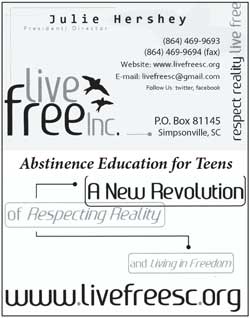Safe, Clean, Cheap, Efficient, and Almost Unlimited Nuclear Power

According to Henry Tillman, CEO of Aiyana Advisory and Research, interviewed by Norwegian political science Professor Glenn Diesen on April 23, China is ten years ahead of the rest of the world in the revolutionary development of thorium as nuclear fuel. China has just made history by activating the world’s first thorium-fueled commercial nuclear reactor in its Manchurian Gobi Desert. According to Engineerine.com, this is a major breakthrough in producing safe, sustainable, and efficient nuclear energy—25 times more efficient according to Tillman. Unlike conventional uranium reactors, this thorium molten salt reactor (MSR) is meltdown-proof and produces minimal long-lived radioactive waste. Thorium is much more abundant than uranium and much safer than uranium. Moreover, it is very clean-burning (98%) and much superior to fossil fuels and uranium-based nuclear fuel in its minimal environmental impact. The Chinese claim Thorium nuclear power will give them 60,000 years of sustainable cheap energy.
Thorium was discovered in 1828 by Swedish chemist Jacob Berzelius, who named it after Thor, the Norse god of thunder and war. Thorium (symbol Th, atomic number 90) is a weakly radioactive light-silver metal that is more than four times more abundant than uranium and almost as abundant as lead and more abundant than tin. It quickly turns gray and then black on exposure to oxygen and becomes thorium dioxide. The half-life of its most stable isotope is over 14 billion years, about the same as the estimated age of the universe. It is moderately soft and malleable. Its melting temperature is extremely high. It can be rolled into sheets or wire. It can also form alloys with other metals. It burns with a very bright flame but is not highly explosive. Refined to a nearly pure state, thorium can ignite on exposure to oxygen. It is prevalent in diluted forms in the earth’s crust, and can be found at very low concentrations in soil. It is more commonly found in more concentrated oxide forms in rocks, gravel, and sands. It is estimated to be present at the core of the earth as well. Because of its very long half-life, scientists estimate that 85 percent of the original thorium in the earth’s crust is still here.
Thorium is one of the rarest elements in the cosmic universe, but it is one of the more abundant of the heavy metals in the earth’s crust and the 37th most common of all elements in the earth’s crust. However, it is almost always found only as a small part of other mineral deposits. Monazite, a mixture of phosphates and other rare-earth elements, is the most important commercial source of thorium because it occurs in large deposits worldwide. Typically, monazite yields only about 2.5 percent thorium, but some deposits are as much as 20 percent thorium. The largest known deposits so far are found in India, South Africa, Brazil, Australia, and Malaysia, but there are estimated to be large deposits in the United States, Canada, China, Russia, Egypt, Turkey, Venezuela, Norway, Sweden, and Greenland. In fact, if China, with a population of more than 1.4 billion, and known thorium deposits, which amount to just 5 percent of the more than 600 million-ton known total can be Thorium energy sufficient for 60.000 years, at least 36 other countries can do the same. And the known global deposits many be only the tip of the Thorium energy iceberg. Thorium may be an energy revolution, indeed. Moreover, China’s ten-year lead in thorium nuclear technology gives the Chinese important strategic advantages in strengthening its international influence. It is a perfect draw to China’s already successful and expanding Belt and Road assistance program for developing nations. Modular thorium nuclear power plants should be available by 2029. The Russian Federation’s nuclear power plant company, Rosatom, is also advancing faster in the technology than the U.S. and its NATO and European Union allies.
Edward Teller, the Hungarian-American physicist and chemical engineer, who is often called the “father of the hydrogen bomb,” introduced Thorium to the Eisenhower administration in 1959 as a possibility to produce safe nuclear energy. There was still a massive amount of investigation, experimentation, work, and enormous levels of investment before it became economically feasible. Nuclear weapons were given higher priority. However, thorium nuclear technology was used to power a large American cargo ship from 1962 to 1972 without incident.
Yet the effort was shut down in 1972 because of health fears over Thorium’s radio-active nature and the enormous investment needed to bring thorium nuclear power to economically feasible scales. The radio-active nature of thorium was greatly exaggerated. There were many uses for thorium that presented little danger. Thorium radio-active rays are so weak, they cannot penetrate human skin. This ban on thorium was removed in 2011, but the U.S. made little effort to exploit its possibilities. The U.S. however, shared its technology with many countries, including China and the Russian Federation. China immediately invested heavily in the project and doubled down in 2021. According to Tillman, thorium-powered trains, ships, trucks, construction equipment, and automobiles will be widespread by 2040-2045. Their usefulness in long-range aircraft, drones, missiles, and rockets is undeniable. Thorium power will also be useful for operating AI data centers. The most common use of thorium in recent years has been for bright and long-lasting light bulbs.
Thorium nuclear power development requires huge financial investments, long lead times, and sufficient numbers of high quality human resources brainpower trained and educated in the physical sciences, engineering, computer technology, systems design, and mathematics.
According to World Population Review, the 2022 student assessment scores for the Program for International Student Assessment (PISA) indicated China had the second highest overall and math score and the third highest science score of 81 tested countries. The United States did not do badly but showed some weakness in math. The U.S. ranked 18th overall and 16th in science but 34th in math. The Russian Federation did not participate but is known for its rigorous engineering and science standards in secondary and higher education institutions. Singapore, China, Japan, Taiwan, and South Korea consistently ranked in the top five of math and science scores. Estonia, Finland, Canada, Australia, and the Netherlands also consistently scored in the top ten of math, science, or both. The trend in the United States has been down.
If we want to maintain sufficient levels of U.S. leadership in national security and science, we must face the reality of American educational deficiencies and insist on more rigorous academic standards of achievement. This will require courageous changes in our educational institutions, Congress, state legislatures, county commissions, city governments, and school boards. It will most emphatically require informed concern and active participation of parents.
This may also be an opportunity for investors. A good web search start would be: SMR Thorium Nuclear Companies. Here is a relevant article on “ Thorium Small Nuclear Reactors (SMRs)—The Future of Nuclear Energy,” by Ronald Legarski.
An excellent 36-minute YouTube video introduction to the subject is Norwegian International Relations Professor Glenn Diesen’s interview of Henry Tillman: Henry Tillman: China’s Thorium Revolution—60,000 Years of Cheap Energy; dated April 23, 2025.
Click: Bing Videos
Diesen has also been a reliable source on the Ukraine War. Subscribe to his videos and read his book; The Ukraine War and the Eurasian World Order, 2024, highly recommended by Professor John Mearsheimer, Univ. of Chicago, leading proponent of Foreign Policy Realism; former Ambassador Jack Matlock (USSR 1987-1991) and former Ambassador Chas Freeman, also former Asst. Secretary of Defense; former CIA Russian expert and Presidential Briefer for the Reagan Cabinet, Ray McGovern; and former British diplomat, Alastair Crooke.
Thorium has the potential for marvelous blessings in many sciences on a global scale. But complacency won’t make America great again. The U.S. is falling behind in both defense and nuclear technology. A significant cause of both is that we are falling behind in educational emphasis and standards. Knowledge and clear thinking are necessary to survive, prosper, and contribute to a better life for all. However, change always requires courage.
“Where courage is not, no other virtue can survive except by accident.” - Samuel Johnson (1709-1784)
“Courage is not simply one of the virtues, but the form of every virtue at the testing point.” - C. S. Lewis (1898-1963)









 Mike Scruggs is the author of two books: The Un-Civil War: Shattering the Historical Myths; and Lessons from the Vietnam War: Truths the Media Never Told You, and over 600 articles on military history, national security, intelligent design, genealogical genetics, immigration, current political affairs, Islam, and the Middle East.
Mike Scruggs is the author of two books: The Un-Civil War: Shattering the Historical Myths; and Lessons from the Vietnam War: Truths the Media Never Told You, and over 600 articles on military history, national security, intelligent design, genealogical genetics, immigration, current political affairs, Islam, and the Middle East. 


